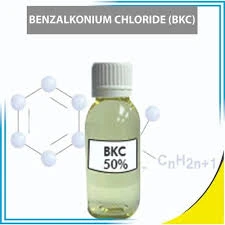Application of Poly Aluminium Chloride in Effective Water Treatment Solutions
The Use of Poly Aluminium Chloride in Water Treatment
Water treatment is an essential process that ensures the availability of clean and safe drinking water, as well as the protection of public health and the environment. Among various coagulants used in this field, Poly Aluminium Chloride (PAC) stands out for its effectiveness in removing impurities from water. This article explores the use of PAC in water treatment, its benefits, and its operational mechanisms.
Poly Aluminium Chloride is an inorganic polymer that exists as a white or off-white powder or as a liquid. It serves as a coagulant in water treatment processes by facilitating the aggregation of suspended particles and impurities, thus making them easier to remove from the water supply. The primary mechanism of PAC involves charge neutralization and bridge formation, which enhances the coagulation process.
One of the significant advantages of using PAC is its efficiency. Compared to traditional coagulants like aluminum sulfate, PAC requires lower doses to achieve similar or even better results in turbidity removal. This is particularly beneficial for water treatment facilities as it can translate to lower operational costs. Furthermore, PAC has a wider pH operating range, making it more versatile in treating different types of water, including surface water and wastewater.
The application of PAC in water treatment involves several steps. Initially, water containing suspended solids, organic matter, and other contaminants is tested to determine its quality. After this analysis, PAC is added to the water, where it begins to neutralize the charges of suspended particles. This interaction causes the particles to agglomerate into larger flocs. These flocs can then be easily separated through sedimentation or filtration processes.
use of poly aluminium chloride in water treatment

Another significant benefit of PAC is its capability to reduce the formation of harmful byproducts. When chlorine is used as a disinfectant in water treatment, it can react with organic matter to form trihalomethanes (THMs), which are potentially hazardous to human health. By effectively removing organic substances through coagulation, PAC helps in minimizing the precursors of THM formation, thus making chlorination safer and more effective.
Despite its advantages, there are considerations to keep in mind when using PAC. The dosage must be carefully controlled, as over-dosing can lead to increased residual aluminum concentrations in the treated water. While PAC is generally considered safe, concerns about aluminum accumulation in the human body have led to ongoing studies to ensure safe usage levels. Proper monitoring and adherence to regulatory guidelines help mitigate these concerns.
In addition to its application in municipal water treatment plants, PAC is gaining traction in various industries, including food and beverage, pharmaceuticals, and paper manufacturing, where water quality is paramount. Its effectiveness and adaptability make PAC a preferred choice in many scenarios where water clarity and safety are required.
In conclusion, Poly Aluminium Chloride is a valuable coagulant in the water treatment industry, offering numerous benefits over traditional coagulants. Its efficiency in removing impurities, versatility across pH conditions, and reduced risk of harmful byproducts make it an essential component in producing safe and clean drinking water. As water treatment technologies continue to evolve, the role of PAC in ensuring water quality will likely become even more significant, contributing to better public health outcomes and environmental protection.
-
lk-319-special-scale-and-corrosion-inhibitor-for-steel-plants-advanced-solutions-for-industrial-water-systemsNewsAug.22,2025
-
flocculant-water-treatment-essential-chemical-solutions-for-purification-processesNewsAug.22,2025
-
isothiazolinones-versatile-microbial-control-agents-for-industrial-and-consumer-applicationsNewsAug.22,2025
-
scale-inhibitor-key-solutions-for-water-system-scale-preventionNewsAug.22,2025
-
organophosphonates-versatile-scale-inhibitors-for-industrial-water-systemsNewsAug.22,2025
-
scale-and-corrosion-inhibitor-essential-chemical-solutions-for-water-system-maintenanceNewsAug.22,2025





